
You might think dry areas can’t have pretty gardens, but they can!
Choose plants that love little water, like cacti or lavender. Add rocks, mulch, or small ponds to make your space special. These ideas save water and help bees and birds find homes.
Tired of dry gardens?
Try creative ideas that work magic! Use color and texture to make your yard pop. Easy steps turn tough spots into happy places. Learn how to grow green with less effort.
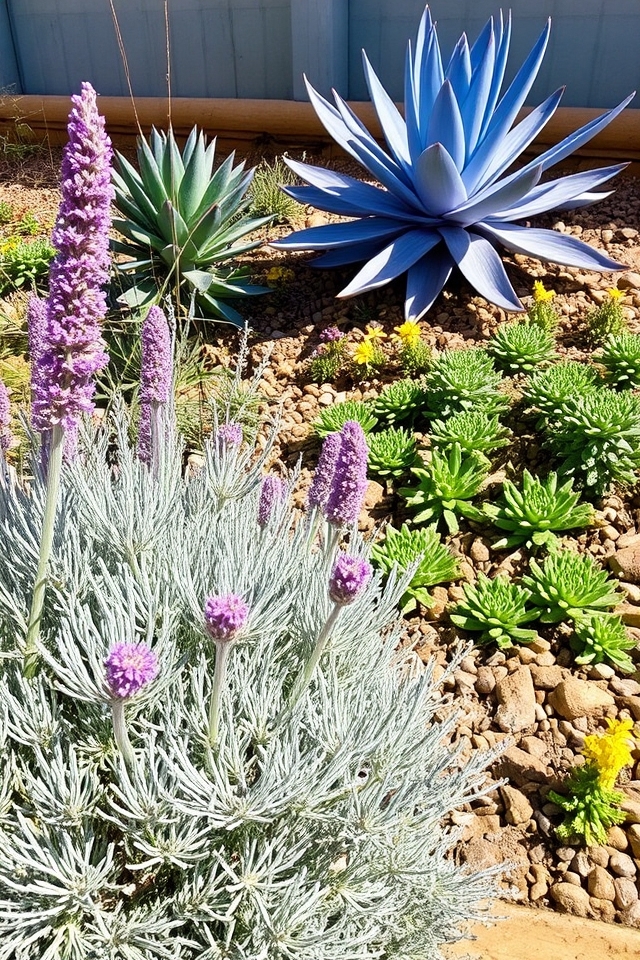
When selecting plants for dry areas, choosing drought-tolerant species is essential for a thriving garden. Look for native plants, succulents, and Mediterranean herbs, which have adapted to withstand low water conditions. Examples include lavender, agave, and sedums. These plants not only require minimal irrigation once established but also bring beauty and resilience to your landscape. By incorporating a variety of textures and colors, you can create a vibrant garden that thrives in dry environments.
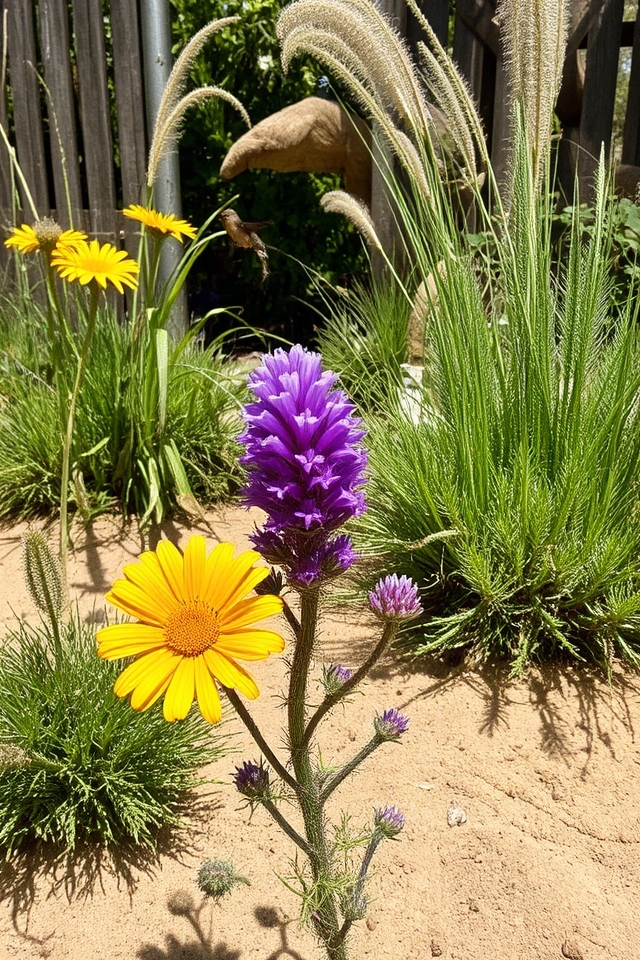
Incorporating native species into your garden design for dry areas is a sustainable and effective strategy. Native plants are well-adapted to local climates and soil conditions, requiring less water and maintenance compared to non-native varieties. They also support local wildlife, such as pollinators and birds, fostering biodiversity. Opt for vibrant, drought-resistant native flowers, shrubs, and grasses to create a striking landscape while conserving resources. Embrace the beauty of nature by selecting plants that thrive in your specific region.
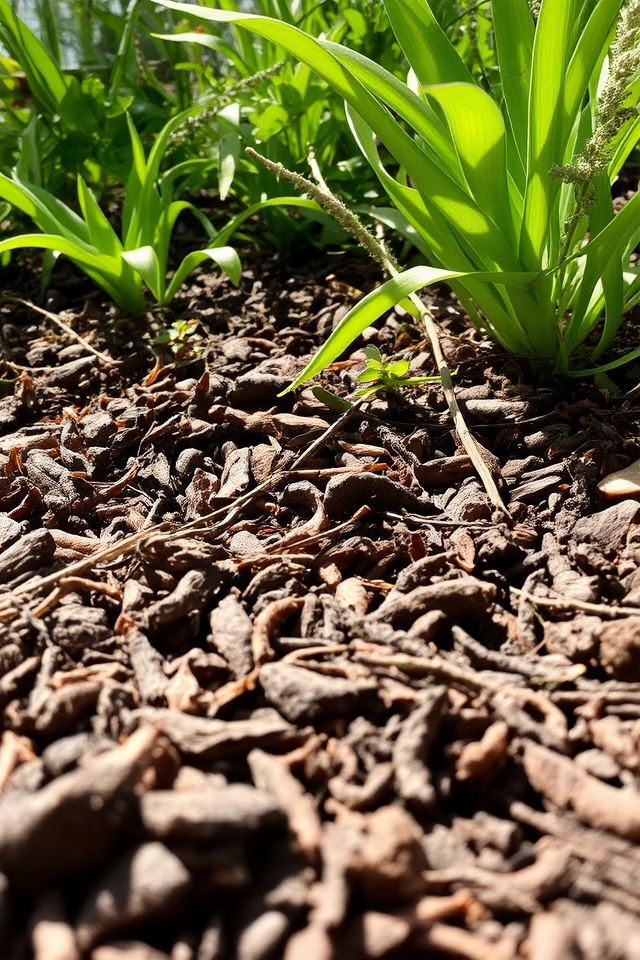
Using mulch is an effective strategy for retaining moisture in dry garden areas. By covering the soil with organic materials such as wood chips, straw, or bark, you create a barrier that reduces evaporation, keeping the soil moist for longer periods. Mulch also helps to regulate soil temperature, suppress weeds, and enhance the overall aesthetics of your garden. Regularly replenishing the mulch layer guarantees continued moisture retention, promoting healthier plant growth in arid conditions.
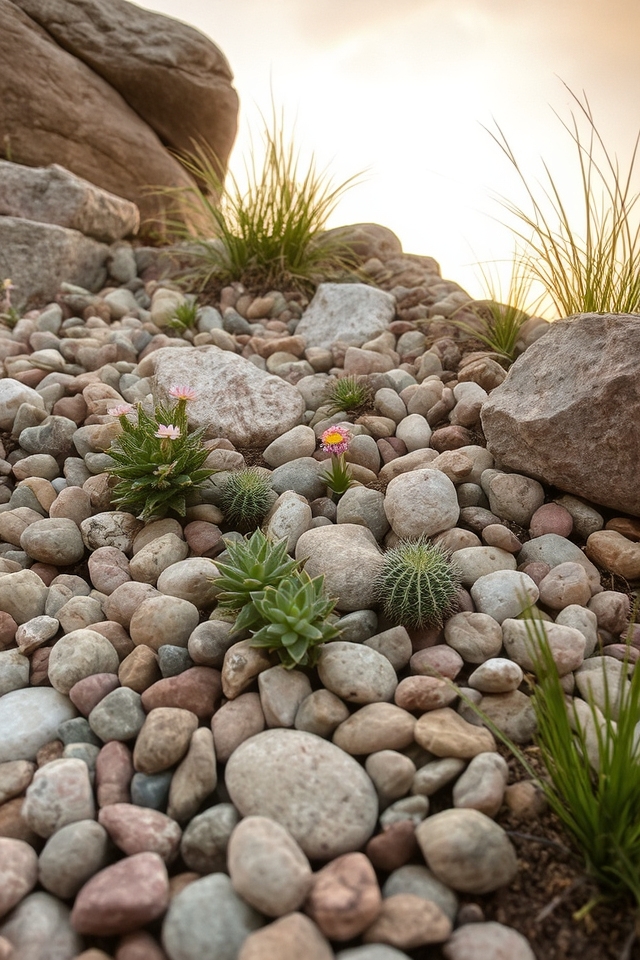
Creating rock gardens is an excellent way to beautify dry areas while incorporating low-maintenance elements. By combining various sizes of rocks with drought-tolerant plants, you can simulate a natural landscape that thrives in arid conditions. Choose hardy succulents, cacti, and native wildflowers to fill the gaps between stones. This not only enhances the visual appeal but also retains moisture in the soil, making it a sustainable choice for water-conscious gardeners.
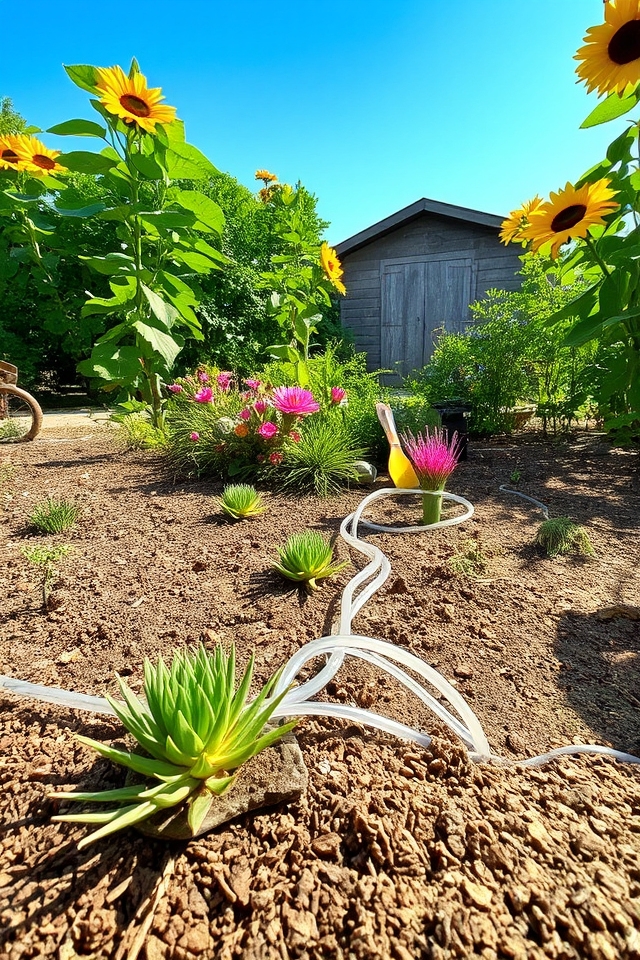
Implementing drip irrigation systems is an efficient way to water plants in dry areas. This method delivers water directly to the roots, minimizing evaporation and runoff. Drip irrigation can be customized to suit various plant types and garden layouts, ensuring that moisture reaches where it’s needed most. By conserving water and promoting healthy growth, this system not only enhances the sustainability of your garden but also helps you maintain a vibrant landscape despite challenging dry conditions.
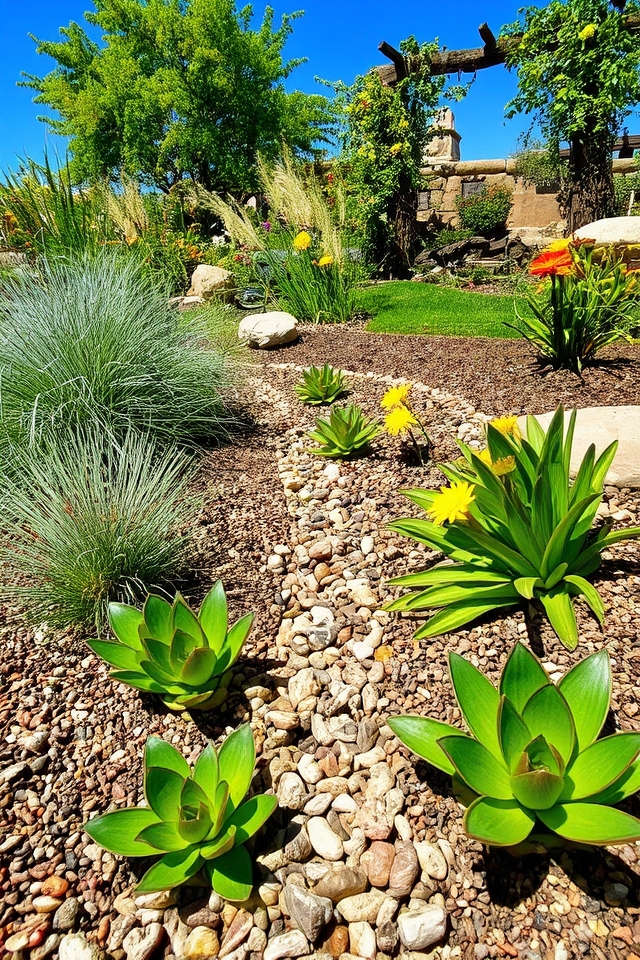
Designing a xeriscape garden involves creating a low-water landscape that thrives in dry climates while minimizing maintenance. Focus on native and drought-tolerant plants that require little irrigation, such as succulents, ornamental grasses, and certain perennials. Incorporate mulch to retain moisture, and use rocks or gravel for pathways. Group plants with similar water needs and utilize efficient irrigation methods, like drip systems. By combining thoughtful design with sustainable practices, a xeriscape garden can be both beautiful and resilient.
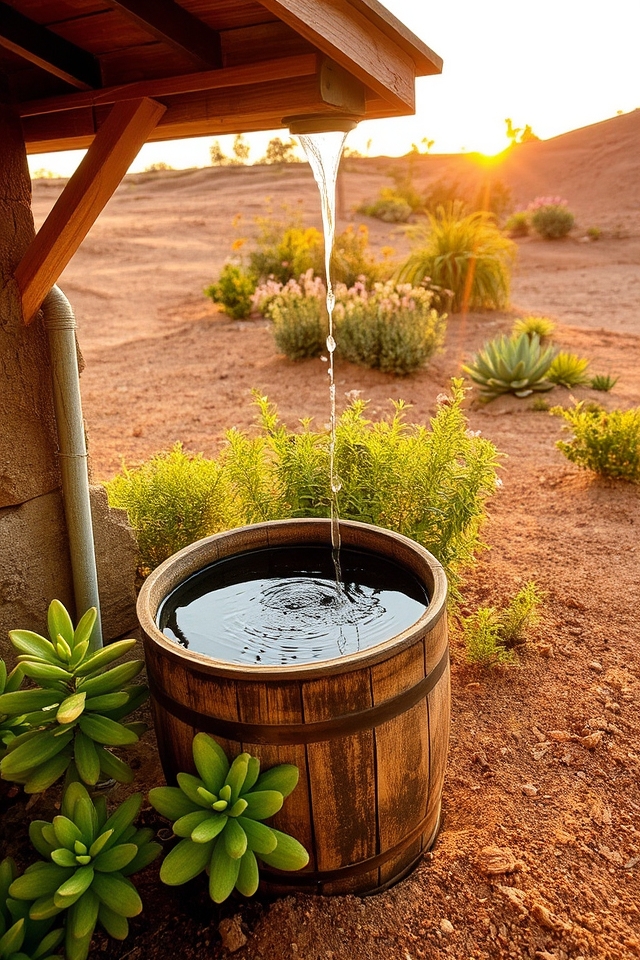
Rainwater harvesting is an effective strategy for gardens in dry areas, helping to conserve precious water resources. By collecting rainwater from rooftops and directing it into storage tanks or barrels, gardeners can create a sustainable irrigation system. This not only reduces reliance on municipal water but also provides a natural source of hydration for plants during dry spells. Implementing rainwater harvesting guarantees a more resilient garden while promoting environmental stewardship.
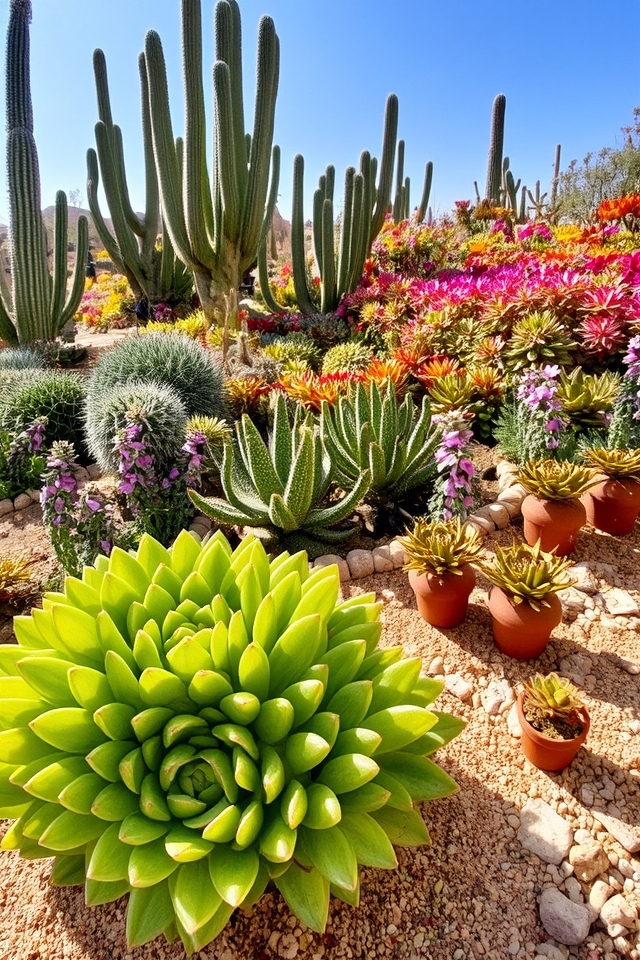
Planting succulents and cacti is an excellent choice for dry areas, as they are specifically adapted to thrive in arid conditions. These drought-resistant plants store water in their leaves, stems, and roots, allowing them to survive long periods without rainfall. They come in various shapes, sizes, and colors, adding visual interest to your garden. Pair them with decorative rocks or sandy soil for a beautiful, low-maintenance landscape that requires minimal watering and care.
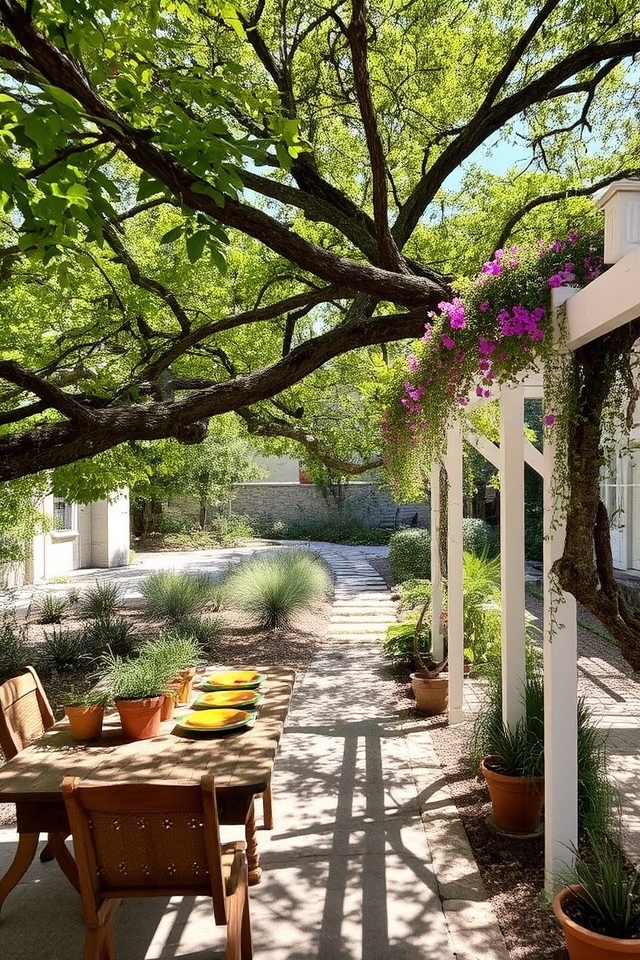
Creating shade in dry areas is essential for promoting a healthy garden environment. Strategically planting trees, such as oaks or pines, can provide natural shade while enhancing the landscape. Additionally, incorporating structures like pergolas or arbors can offer relief from the sun. Make sure to use climbing plants to add greenery and improve aesthetics. These shaded areas will help retain moisture in the soil and create a comfortable space for relaxation or outdoor activities.
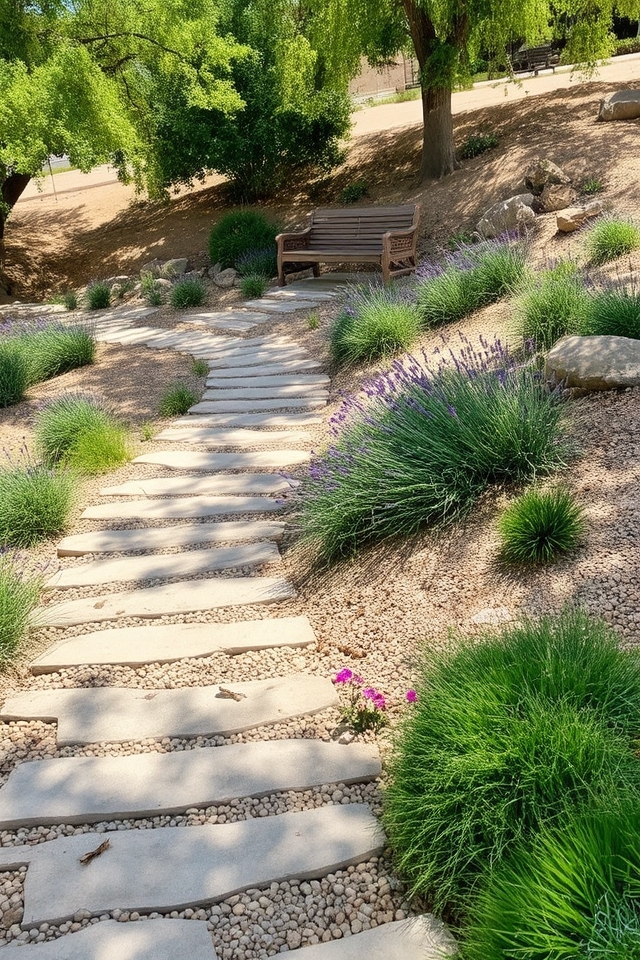
Using permeable pathways in gardens located in dry areas is an excellent way to enhance both functionality and aesthetics. These pathways allow water to seep through, promoting groundwater recharge and reducing runoff. Materials such as gravel, porous pavers, or decomposed granite can create attractive, eco-friendly walkways. Additionally, incorporating native plants alongside these pathways can help stabilize the soil and provide habitats for beneficial wildlife, making your garden more sustainable and visually appealing.
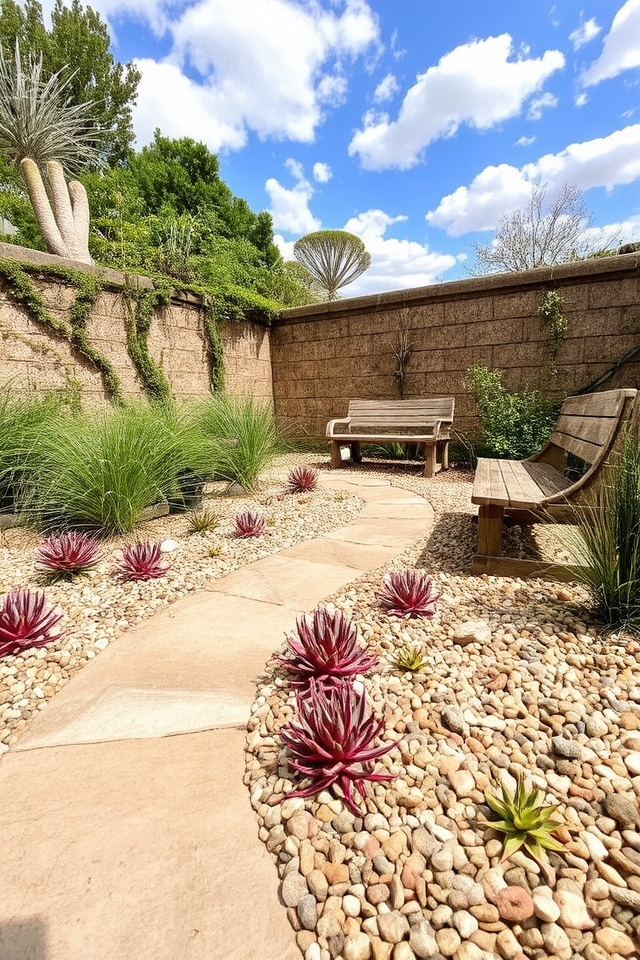
Incorporating gravel or decorative stones into your garden design is an excellent way to enhance dry areas. These materials not only provide a visually appealing contrast to greenery but also help retain moisture in the soil by reducing evaporation. Gravel paths can guide visitors through the garden while also preventing soil compaction. Choose stones in various sizes and colors to create unique patterns and textures, making your dry garden a stunning focal point while promoting efficient water use.
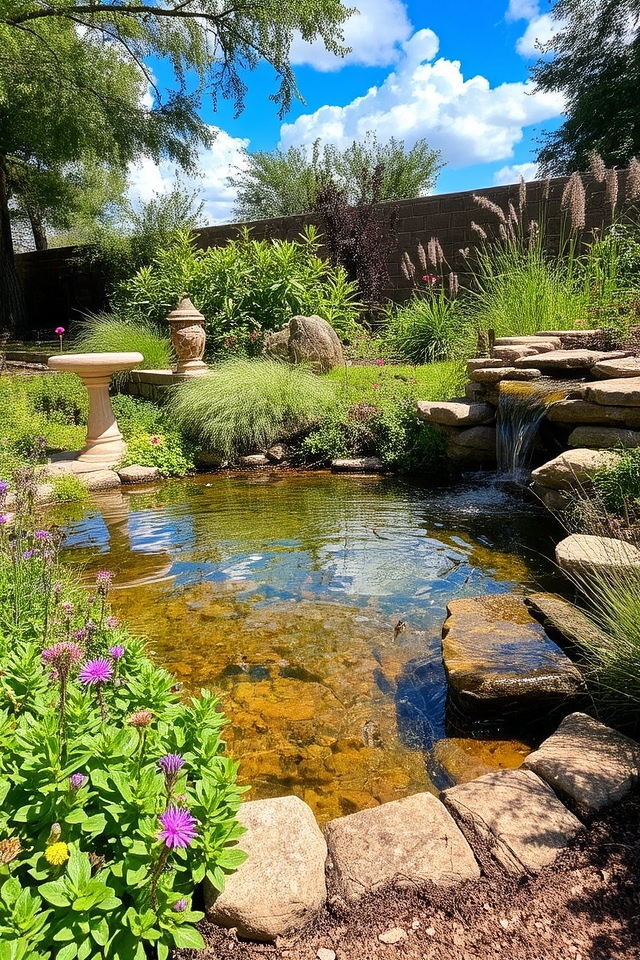
A water feature can be a stunning addition to any garden, especially in dry areas where it serves both aesthetic and practical purposes. A small pond, waterfall, or even a decorative birdbath can create a microclimate that supports moisture-loving plants and attracts wildlife, such as birds and beneficial insects. Incorporating native plants around the water feature can enhance its beauty while providing essential hydration. The soothing sound of flowing water also adds a calming ambiance, making your dry garden an inviting oasis.

Container gardening is an excellent solution for dry areas, allowing you to control soil quality and moisture levels effectively. By using pots, raised beds, or troughs, you can create a microclimate that retains water better than traditional ground gardening. Choose drought-resistant plants, such as succulents or herbs, which thrive in small spaces and require less water. Additionally, containers can be moved to maximize sun exposure or shade, offering versatility in your gardening design.
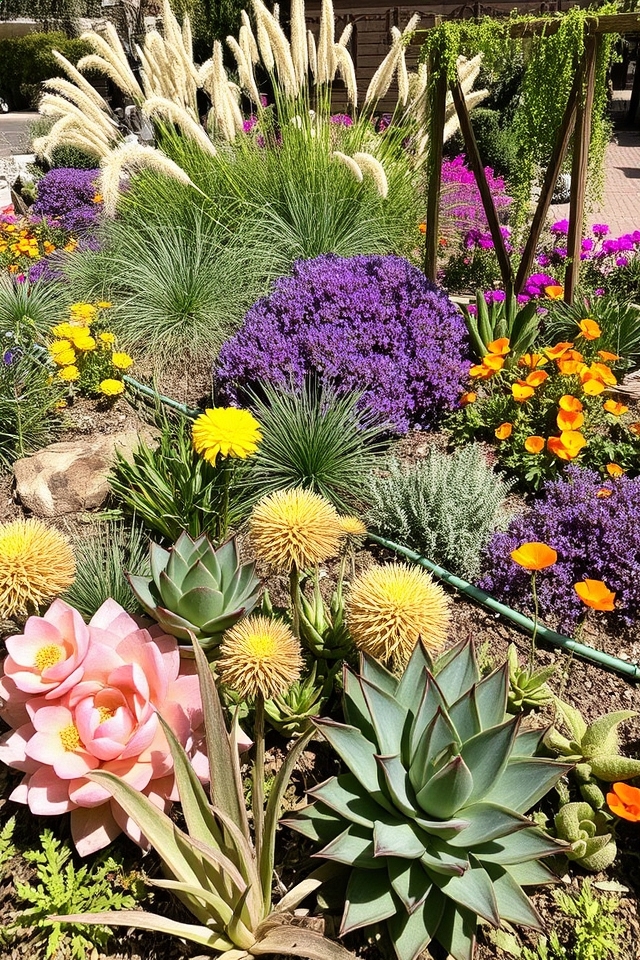
Grouping plants by their water needs is essential for creating a successful garden in dry areas. By organizing plants that require similar moisture levels, you can promote healthier growth and reduce water waste. Place drought-tolerant plants together, ensuring they share the same irrigation schedule. This strategy not only conserves water but also enhances the overall aesthetic of your garden, creating harmonized plant groupings that thrive in arid conditions.
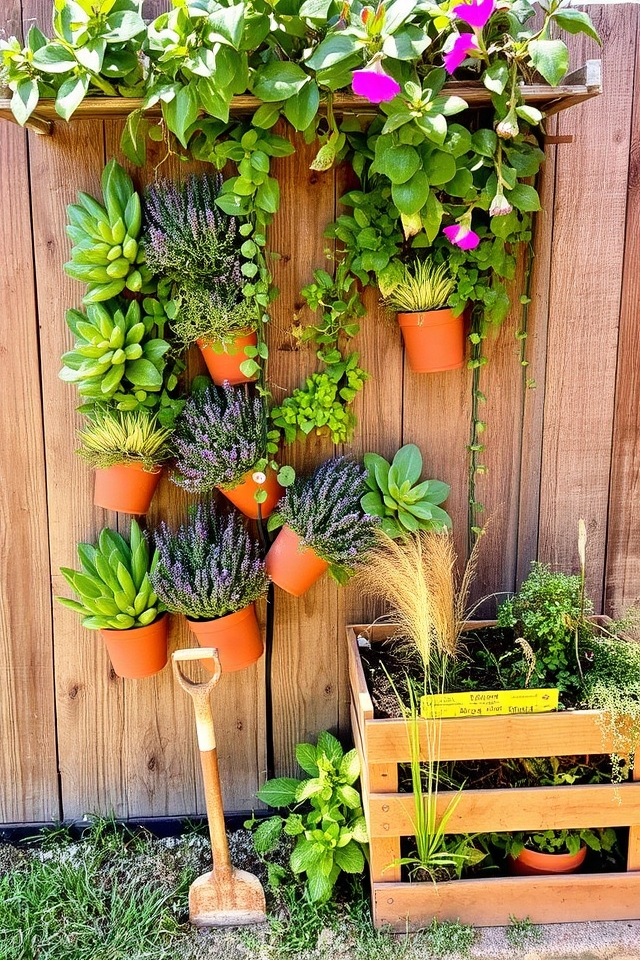
Vertical gardening is an innovative solution for dry areas where ground space is limited and water conservation is essential. By utilizing walls, fences, or trellises, gardeners can grow a variety of drought-tolerant plants in vertical structures that maximize sunlight exposure and airflow. This method not only enhances aesthetics but also reduces water evaporation. Incorporating drip irrigation or self-watering systems can further optimize water use, making vertical gardens an ideal choice for arid environments.
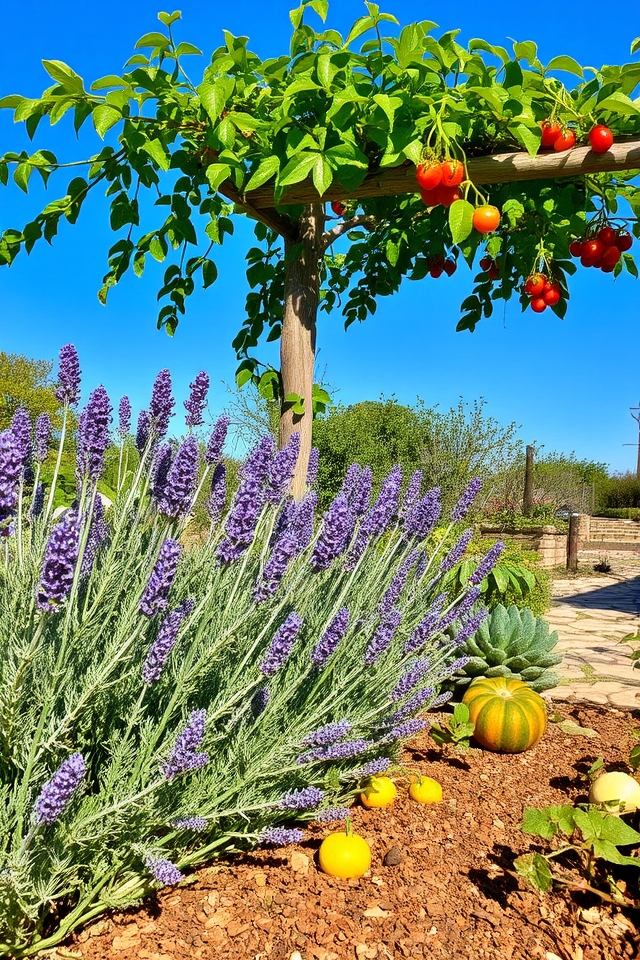
Integrating edible landscaping into dry areas is a sustainable and visually appealing way to enhance your garden. Choose drought-resistant fruits, vegetables, and herbs that thrive in arid conditions, such as lavender, rosemary, and certain types of squash. By combining ornamental plants with edible varieties, you create a beautiful, functional space that maximizes water efficiency. This approach not only provides fresh produce but also adds diversity and interest to your landscape while minimizing water usage.
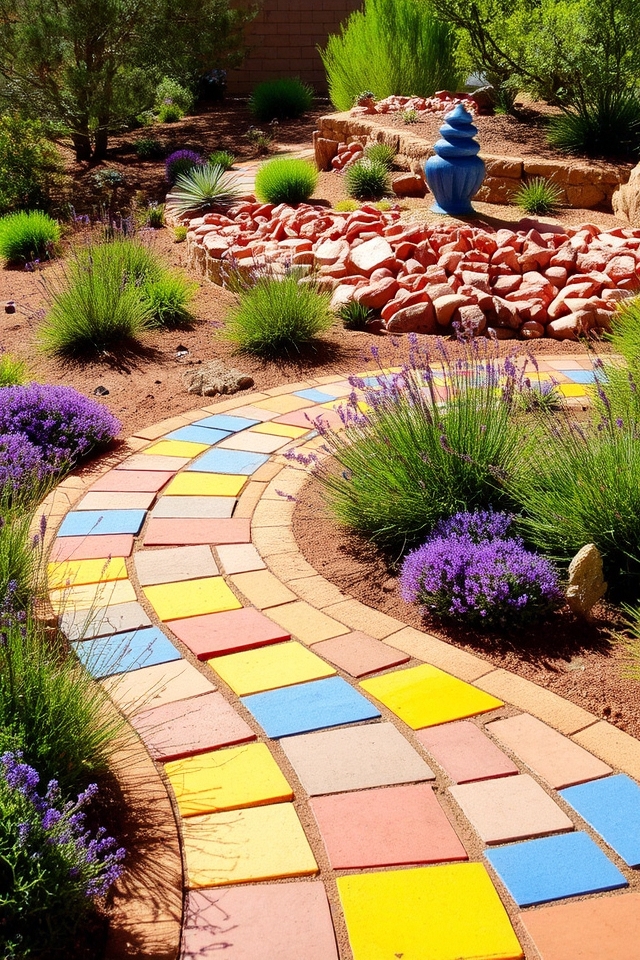
In dry areas, incorporating colorful hardscaping elements can enhance the vibrancy of your garden while conserving water. By using materials like colored stone, decorative pavers, or bright tiles, you can create contrast against arid landscapes. These elements not only provide visual interest but also help define spaces, guide pathways, and establish focal points. When designed thoughtfully, colorful hardscaping can transform a barren area into an inviting outdoor retreat while requiring minimal water maintenance.
By embracing these 17 creative garden ideas, you’ll transform dry areas into vibrant, sustainable spaces that thrive with life. Did you know that incorporating native plants can reduce your water usage by up to 50%? Not only will your garden flourish with less effort, but it’ll also support local wildlife and add aesthetic appeal. So, get started on your drought-tolerant oasis today and watch as beauty and sustainability flourish hand in hand!
